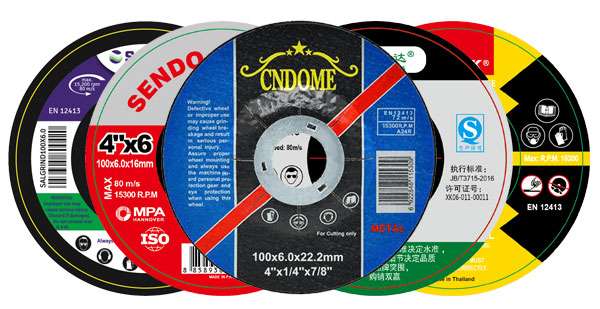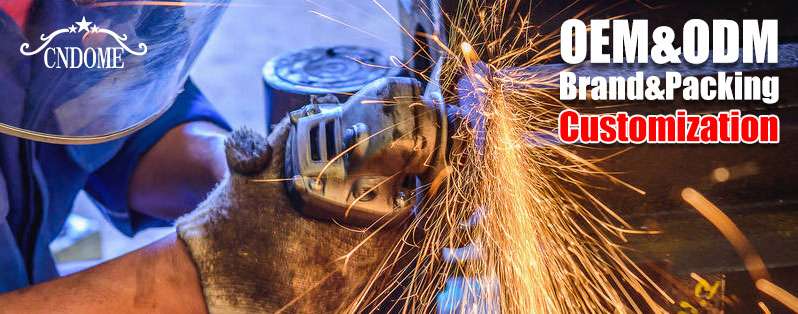Grinding wheels are essential tools in manufacturing and metalworking, designed to remove material, shape, and finish surfaces with precision. The right choice of a grinding wheel can greatly affect the efficiency and quality of your work. In this blog, we’ll delve into the various types of grinding wheels, their applications, and the materials they’re best suited for.
1. Straight Grinding Wheels
Straight grinding wheels are the most common type and are used primarily for surface grinding and cylindrical grinding operations. These wheels are flat with a straight surface and come in various sizes and abrasive types.
- Applications: Surface grinding, cylindrical grinding, sharpening tools.
- Materials: Suitable for materials like steel, stainless steel, and cast iron.
2. Cylinder or Wheel Ring Grinding Wheels
These grinding wheels are large and generally made for surface grinding applications. They are hollow and can handle heavy-duty grinding tasks.
- Applications: Surface grinding on a larger scale.
- Materials: Typically used on steel and other hard metals.
3. Tapered Grinding Wheels
Tapered wheels have a taper on one side that makes them ideal for grinding threads, gear teeth, and other detailed work that requires a precise edge.
- Applications: Thread grinding, gear teeth grinding.
- Materials: Used on hard metals like steel and iron.
4. Straight Cup Grinding Wheels
Straight cup wheels have a cup shape with a broad surface, making them suitable for grinding on flat surfaces or slight contours. They provide a smooth finish and are often used in tool and cutter grinding.
- Applications: Tool sharpening, cutter grinding.
- Materials: Ideal for use on steels and hard metals.
5. Dish Cup Grinding Wheels
These wheels have a dish shape, which provides an excellent surface for grinding away excess material and deburring. They are often used in the manufacture and sharpening of saw blades.
- Applications: Saw blade sharpening, deburring.
- Materials: Suitable for metals like steel and carbide.
6. Segmented Grinding Wheels
Segmented wheels consist of several segments of abrasive material. These segments are arranged around the periphery of the wheel, allowing for better heat dissipation and higher material removal rates.
- Applications: Heavy-duty grinding, cutting.
- Materials: Ideal for concrete, stone, and other construction materials.
7. Cutoff Wheels
Cutoff wheels are thin, usually reinforced with a fiberglass layer, designed for making precise cuts in metal and other hard materials. They are used in handheld grinders for cutting and slotting operations.
- Applications: Cutting, slotting.
- Materials: Suitable for metals, ceramics, and composites.
8. Diamond Grinding Wheels
Diamond grinding wheels are made with industrial diamonds bonded to the edge. They are incredibly hard and are used for grinding hard materials, including ceramics, glass, and carbide.
- Applications: Precision grinding, finishing.
- Materials: Ideal for very hard materials like carbide, ceramics, and glass.
9. Mounted Points
Mounted points are small grinding wheels mounted on a spindle or mandrel. They are used for precision grinding, deburring, and finishing in hard-to-reach areas.
- Applications: Precision work, internal grinding.
- Materials: Suitable for metals, ceramics, and other hard materials.
10. Centerless Grinding Wheels
Centerless grinding wheels are used in a centerless grinding process, which is ideal for mass-producing cylindrical components. These wheels support and grind the workpiece simultaneously.
- Applications: High-volume production, cylindrical grinding.
- Materials: Typically used for steel and other metals.

Choosing the Right Grinding Wheel
Selecting the appropriate grinding wheel involves understanding the material to be worked on, the desired finish, and the grinding process itself. Here are a few factors to consider:
- Abrasive Material: Different abrasives (aluminum oxide, silicon carbide, diamond, etc.) are suited for different materials.
- Grain Size: Coarser grains remove material faster but result in a rougher finish, while finer grains provide a smoother finish.
- Bond Type: The bond affects the wheel’s performance and durability. Common bond types include vitrified, resin, and metal bonds.
- Wheel Shape: The shape should match the grinding application.
Conclusion
Understanding the types of grinding wheels and their applications can significantly improve your grinding process’s efficiency and outcomes. Whether you’re working on heavy-duty material removal or precise finishing, there’s a grinding wheel designed to meet your needs. Always consider the material, desired finish, and specific requirements of your task when selecting a grinding wheel to ensure optimal performance and results.
Online Message
Minimum Order Quantity: 5,000 Pcs, 10 Pcs Free Samples.
Contact Us For More Information!
Tel/WhatsApp
+86 18796960868
DomeGrinding@hotmail.com
Address



